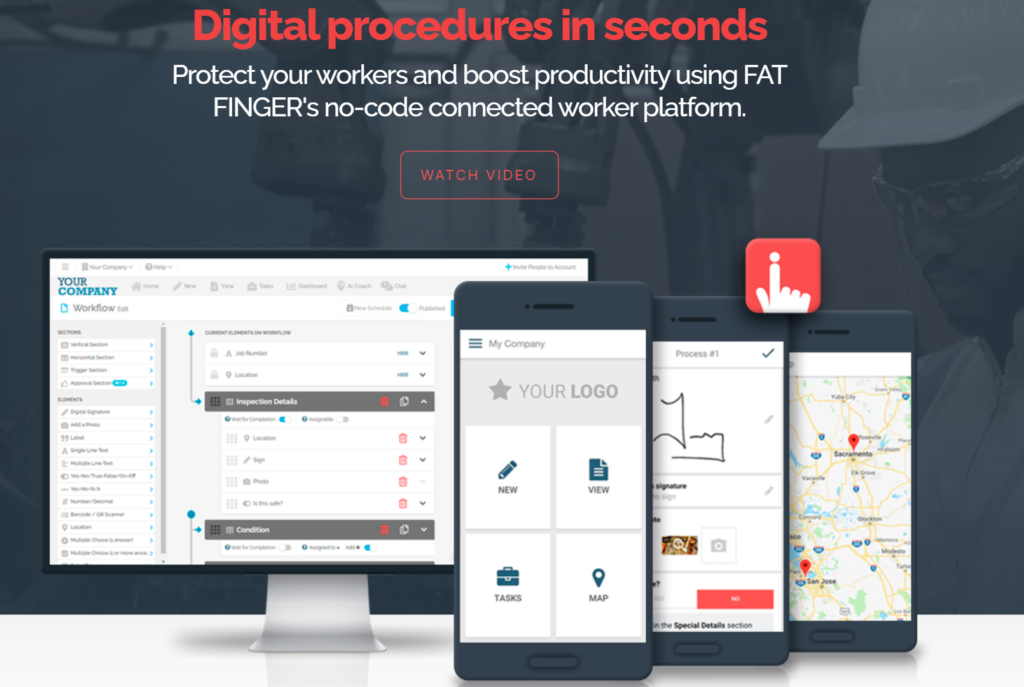The oil and gas industry is a complex and high-stakes field where efficiency and safety are paramount. One of the critical technologies that have revolutionized this industry is Positive Displacement Motors (PDM). Understanding PDM and its applications can significantly enhance operational efficiency and safety.
In this article, we will delve into what PDM is, its importance, and how it can be optimized using digital workflows like FAT FINGER. Request a demo to see how FAT FINGER can streamline your operations.
Understanding Positive Displacement Motors (PDM)
Positive Displacement Motors (PDM) are a type of downhole motor used in the oil and gas industry for drilling operations. Unlike traditional rotary drilling systems, PDMs convert hydraulic energy into mechanical energy, providing a more efficient and controlled drilling process.
How PDM Works
PDMs operate by using the pressure of drilling fluid to create rotational motion. The fluid flows through the motor, causing the rotor to turn. This rotational motion is then transferred to the drill bit, enabling it to cut through rock formations.
Advantages of PDM
- Increased drilling efficiency
- Better control over drilling direction
- Reduced wear and tear on equipment
- Enhanced safety measures
These advantages make PDMs a preferred choice for many drilling operations, especially in challenging environments.
The Importance of Safety in PDM Operations
While PDMs offer numerous benefits, they also come with their own set of challenges, particularly in terms of safety. Ensuring the safety of personnel and equipment is crucial for successful operations.
Common Safety Challenges
- High-pressure fluid systems
- Complex mechanical components
- Harsh environmental conditions
- Human error
Addressing these challenges requires a robust safety management system. This is where digital workflows like FAT FINGER come into play.
Optimizing PDM Operations with FAT FINGER

FAT FINGER offers digital workflows designed to enhance safety and efficiency in PDM operations. These workflows provide real-time data, streamline processes, and ensure compliance with safety standards.
Take 5 Safety
The Take 5 Safety checklist is a proactive tool that encourages workers to take five minutes to assess potential hazards before starting a task. This simple yet effective practice can prevent accidents and ensure a safer working environment.
Near Miss Reporting
Near Miss Reporting is crucial for identifying and mitigating potential hazards. FAT FINGER’s digital workflow makes it easy to report near misses, analyze data, and implement corrective actions.
Job Hazard Analysis
Job Hazard Analysis (JHA) involves identifying potential hazards associated with specific tasks. FAT FINGER’s JHA workflow provides a structured approach to hazard identification and risk assessment, ensuring that all potential risks are addressed.
Risk Assessment
Risk Assessment is a critical component of any safety management system. FAT FINGER’s digital workflow allows for comprehensive risk assessments, enabling organizations to identify, evaluate, and mitigate risks effectively.
Incident Reporting in the Workplace
Incident Reporting is essential for maintaining a safe working environment. FAT FINGER’s workflow simplifies the reporting process, ensuring that all incidents are documented, analyzed, and addressed promptly.
Journey Report
The Journey Report workflow is designed to enhance the safety of personnel during travel. It provides real-time tracking, risk assessments, and safety checklists to ensure that all journeys are conducted safely.
Case Studies: Real-World Applications of PDM and FAT FINGER
Several organizations have successfully implemented PDM and FAT FINGER workflows to enhance their operations. For example, a leading oil and gas company reported a 20% increase in drilling efficiency and a 30% reduction in safety incidents after adopting these technologies.

Case Study 1: Enhanced Drilling Efficiency
A major oil company implemented PDM technology to improve drilling efficiency. By integrating FAT FINGER’s digital workflows, they were able to streamline their operations, resulting in a 20% increase in drilling speed and a significant reduction in equipment downtime.
Case Study 2: Improved Safety Measures
Another organization focused on enhancing safety measures by adopting FAT FINGER’s safety checklists. They reported a 30% reduction in safety incidents, thanks to the proactive identification and mitigation of potential hazards.
Conclusion
Positive Displacement Motors (PDM) play a crucial role in the oil and gas industry, offering numerous benefits in terms of efficiency and control. However, ensuring the safety of PDM operations is equally important. Digital workflows like FAT FINGER provide a comprehensive solution to enhance safety and efficiency in PDM operations.
By leveraging FAT FINGER’s powerful safety checklists, organizations can proactively identify and mitigate potential hazards, ensuring a safer and more efficient working environment. Create your safety workflow for free on FAT FINGER or request a demo to see how it can transform your operations.

